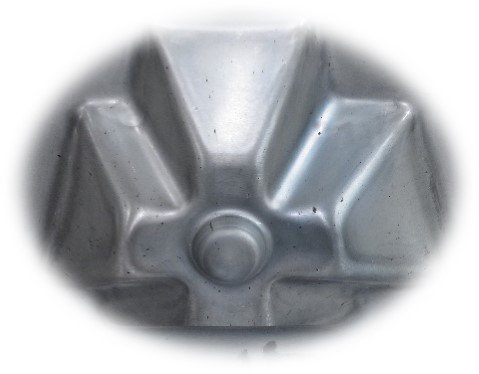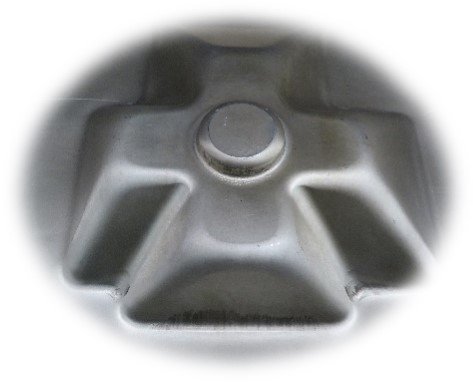Sheet forming
Realising magnesium sheet forming potential using a novel hydroforming process variant
Background
The manufacturing industry is constantly searching for ways to reduce the number of components and create lighter-weight comparatively stiff and cost effective structures for applications. Magnesium has received greater attention in recent years due to it being much lighter by density when compared to aluminium and can generate significant weight savings in components. One of the major challenges of using magnesium in manufacturing is its poor formability at room temperature. Therefore, magnesium sheet material requires the use of hot forming processes such as superplastic forming to obtain complex shapes.
Hydroforming is a well-known technology and in recent years with the advancement of computer simulation, machine control and design for manufacturing tools, it has become a potential alternative to many traditional forming processes to achieve highly complex components. The NMIS-AFRC recently identified a hydroforming technology development from Quintus Technologies, Sweden known as high pressure warm forming (HPWF). This process development is understood to have significant potential to enable forming of a greater range of sheet material for aerospace, automotive and other applications.
Challenge
The key challenges were to understand if this technology can provide an alternative, lower cost method of manufacture to form magnesium sheet material for complex lightweighting applications and to inform how the use of this material (or material variants) could further reduce the weight of aircraft and other vehicle structures and consequently have a positive impact on reducing carbon emissions.
How did NMIS help?
Through the centre’s core research program, the team conducted a high pressure warm forming demonstrator project for Tier One Members, Boeing and Spirit AeroSystems.
The project demonstrated the potential formability of magnesium sheet when using the Quintus Technologies equipment. This project was delivered during the covid-19 pandemic and was made possible by the truly collaborative and flexible approach the AFRC and Quintus teams took to achieve demonstrator trials remotely and on time.
The team proved the level of magnesium material formability improvement from room temperature up to a maximum system temperature capability.

The project accomplished promising results with high-pressure warm forming of lightweight magnesium parts. It demonstrated the potential for reducing process costs through faster forming time and lower tooling costs compared with more conventional hot-forming routes. Beyond these results, the AFRC has successfully supported forming trials remotely during the Covid-19 pandemic and enabled complementary technical capabilities via a strategic partnership elsewhere in Europe, which can prove key for further research into this technology. Overall, using magnesium for lighter-weight components has long shown promise, so we are very pleased with the AFRC’s ability to conduct this demonstration project using a high-pressure warm-forming method, especially within the constraints of a pandemic. We look forward to working with the AFRC and other partners to understand and advance these findings.
The Boeing Company

From start to finish, the AFRC communicated in a timely fashion ensuring updates were provided to Spirit at all times. The project goals were set out in a logical manner as were the objectives. The outputs from the project showed clearly the technical capabilities and limitations of magnesium sheet forming, as well as the cost benefits of using HPWF versus SPF. The outputs of this project have allowed Spirit to include HPWF as a technology within their toolbox for component manufacture in the future.
Spirit Aerosystems
Business impact
The project outputs have shown clear benefits regarding material formability, such as producing complex shapes, and the significant costs savings that can be achieved using this new technology variant to form magnesium sheet. In this study, a cost comparison showed that up to 40% cost savings could be made in producing this complex sheet component. This is compared to traditional methods such as superplastic forming (SPF), where high tooling costs and prolonged cycle times contribute to the higher overall cost.
This information gives the companies involved more confidence in including magnesium sheet in future lightweight design strategies, to further reduce body structure weight and consequently emissions.
